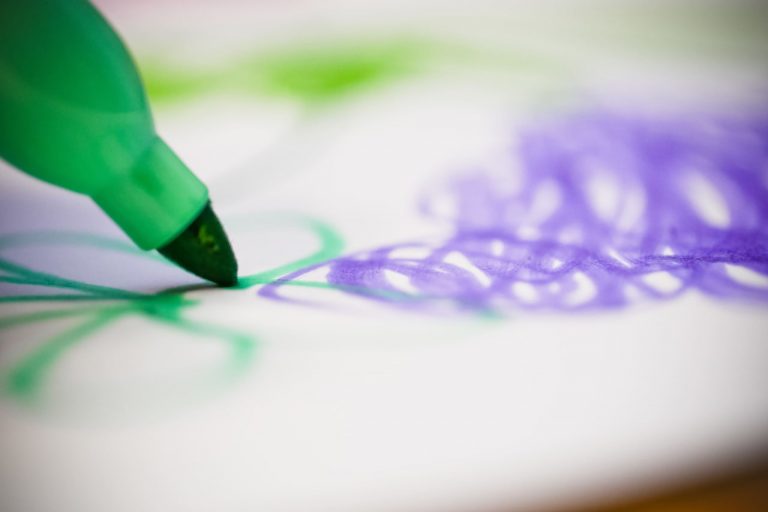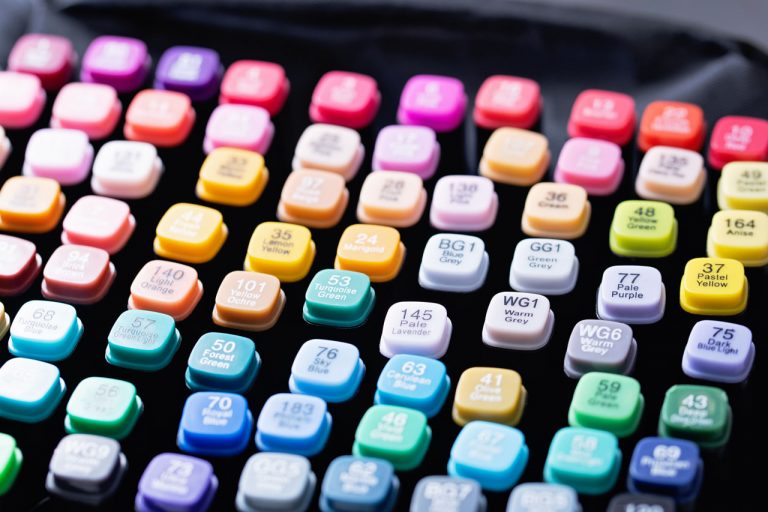When it comes to sketching with markers, the type of marker you choose can make a world of difference in the quality and vibrancy of your artwork. With so many options available on the market, it can be overwhelming to know which markers are best suited for your needs. Whether you’re just starting out or you’re a seasoned artist, selecting the right markers is key to achieving the best results. In this article, we’ll explore the best markers for sketching and provide helpful tips on choosing the perfect ones for your creative projects.
Types of Markers for Sketching
Markers come in various types, each offering distinct features that cater to different artistic styles. Here are the most popular types of markers used for sketching:
- Alcohol-Based Markers: Alcohol markers are a popular choice for sketching because of their smooth flow, vibrant colors, and excellent blending capabilities. These markers contain alcohol as the solvent, which allows them to dry quickly and blend seamlessly. Popular brands include Copic, Prismacolor, and Winsor & Newton. Alcohol markers are ideal for creating rich gradients, layering, and fine details. They’re perfect for professional-level artwork, but they can be a bit more expensive than other markers.
- Water-Based Markers: Water-based markers are more affordable and suitable for beginners. These markers have water as the solvent, which makes them less toxic and easier to blend using water or a blending brush. While water-based markers may not offer the same smooth blending results as alcohol markers, they are still a great option for sketching and can be used to create vibrant artwork. Popular brands for water-based markers include Tombow and Faber-Castell.
- Brush Markers: Brush markers feature a flexible, brush-like tip that mimics the feel of a paintbrush. These markers offer more control and precision, allowing you to create varied line thicknesses and beautiful textures in your sketches. Brush markers can be either alcohol-based or water-based, and they are great for adding expressive strokes, calligraphy, and intricate details. They’re often favored by artists who want to add a more organic, hand-painted look to their sketches.
- Fine Liner Markers: Fine liners are markers with a very thin, precision tip, making them perfect for detailed line work, outlines, and adding intricate details to your sketches. While fine liners are not designed for heavy coloring or blending, they work great for adding fine lines and textures to your artwork. They are available in both water-based and alcohol-based formulations. Popular brands include Micron, Staedtler, and Sakura.
What to Look for in Markers for Sketching
Choosing the right markers for your sketches depends on several factors. Here are some key things to consider before making your purchase:
- Color Range: The color palette of your markers is essential for creating vibrant and dynamic artwork. Many marker sets come with a wide variety of colors, including skin tones, muted shades, and bright hues. Look for marker sets that offer a broad range of colors to give you the flexibility to create diverse artwork. Some brands also offer marker sets that include blending sets or pre-selected colors for specific themes like landscapes or portraits.
- Blendability: One of the most important features of sketching markers is their ability to blend smoothly. Alcohol-based markers typically offer superior blending capabilities, allowing you to create gradients, smooth transitions, and soft shadows. However, some water-based markers can also offer decent blending results, especially if you use a blending brush or water to smooth out the colors.
- Drying Time: The drying time of your markers is an important consideration, especially if you’re working on a multi-layered artwork. Alcohol-based markers tend to dry quickly, which can be an advantage if you want to layer or add details without waiting for the ink to dry. On the other hand, water-based markers can take a little longer to dry, but they may offer more time to work with the ink before it sets on the paper.
- Durability: Quality markers are designed to last longer without drying out or fading. Check customer reviews and ratings to gauge the durability of a particular marker brand. High-quality markers can withstand multiple uses and continue to provide consistent color application over time.
Top Marker Brands for Sketching
With so many brands to choose from, it’s essential to know which markers are widely recommended by artists. Here are a few top marker brands that are popular among sketching enthusiasts:
- Copic: Copic markers are among the best markers for professional artists. They are alcohol-based markers known for their excellent blending capabilities, wide color range, and refillable design. They are perfect for artists who want to achieve high-quality, smooth gradients and vibrant artwork.
- Tombow: Tombow offers both water-based and dual-tip markers. Their brush markers are particularly favored by sketch artists for their flexible tips and smooth application. Tombow markers are also affordable, making them a great choice for beginners and those experimenting with sketching.
- Prismacolor: Prismacolor markers are another top choice for artists, offering alcohol-based markers that are highly pigmented, blendable, and versatile. They’re perfect for creating bold and vibrant artwork. Prismacolor markers are ideal for illustrators who want rich color saturation in their sketches.
- Winsor & Newton: Known for their high-quality art supplies, Winsor & Newton markers offer alcohol-based markers that are perfect for blending and layering. Their markers have a smooth application and provide consistent color results, making them a favorite for professional illustrators.
- Micron: If you’re looking for fine liners for detailed line work, Micron markers are a top choice. Known for their durability, precision, and long-lasting ink, Micron markers are excellent for creating intricate details in your sketches and outlines.
Tips for Using Markers in Sketching
- Use the Right Paper: Marker paper is specially designed to handle ink and prevent bleeding or feathering. Make sure to use smooth, heavyweight paper that can handle markers well. Avoid thin paper, as it may cause the ink to bleed through.
- Layer Gradually: When working with markers, it’s essential to layer gradually. Start with a light base layer and build up the color in layers. This helps you achieve more control over the final look of your artwork.
- Experiment with Textures: Markers can be used to create a wide variety of textures, from smooth gradients to rough textures. Experiment with different strokes, blending techniques, and cross-hatching to create unique textures in your sketches.
With the right markers and techniques, you can create beautiful and dynamic sketches that showcase your artistic talent. Whether you’re a beginner or a seasoned artist, experimenting with different types of markers can help you develop your own unique style. Take the time to explore the many options available to you, and soon you’ll be creating stunning, high-quality sketches with ease!



